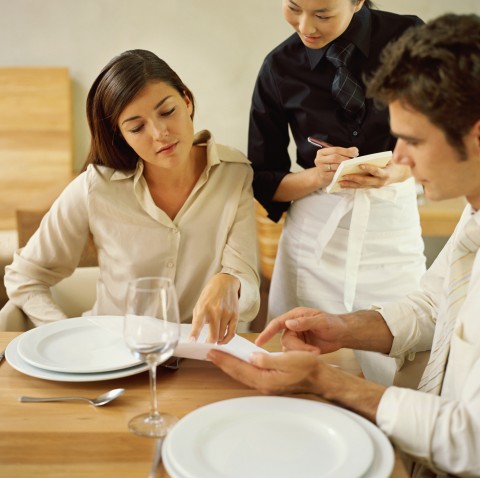
Visiting Seoul can be an enchanting experience, but we all know how stressful planning a trip can be! If you have your heart set on exploring this unique South Korean city, then you’ve come to the right place. In this article, we’ll introduce you to the best places to visit in Seoul, provide some practical information about the country, and cover a handful of useful phrases you can use to converse with locals.

 Table of Contents
Table of Contents
- Before You Go…
- Must-See Places for a 1-3 Day Trip
- Highly Recommended Places for a 4-7 Day Trip (or Longer)
- Korean Survival Phrases for Travelers
- Want to Learn More Survival Phrases? No Problem!
Before You Go…
Here’s some basic information about South Korea you should know before you travel to Seoul:
- Language: Korean. (English is becoming increasingly common, as are Chinese and Japanese.)
- Currency: KRW (won)
- Electricity info: 220 volts (plugs have two round pins)
- Visa: Depending on where you’re from, you may or may not need to obtain a visa in advance. Some countries (including the United States, Australia, Hong Kong, Slovenia, and Japan) are allowed up to ninety days, while other countries have different policies. Check out the website of the Embassy of the Republic of Korea to see if you need to have a visa to enter South Korea.
- Payment methods: Most restaurants, cafes, shops, and even taxis accept credit cards. Because of this, most Koreans rarely carry cash.
- Average cost of a meal: While meal prices in South Korea can vary, the cheapest cost of food is about ₩2,500 (for a roll of Kimbap, for example). That said, the average cost of food in South Korea is about ₩29,301 per day.
- Technology: South Korea ranks among the most technologically advanced countries in the world. This creates plenty of benefits for travelers in the country, including access to free wifi just about everywhere: on the subway, in restaurants, in cafes, in public places, and so on.
Transportation: Transportation in South Korea is easy to use, as all of the signs and announcements are written and announced in multiple languages, including Korean, English, Chinese, and Japanese.
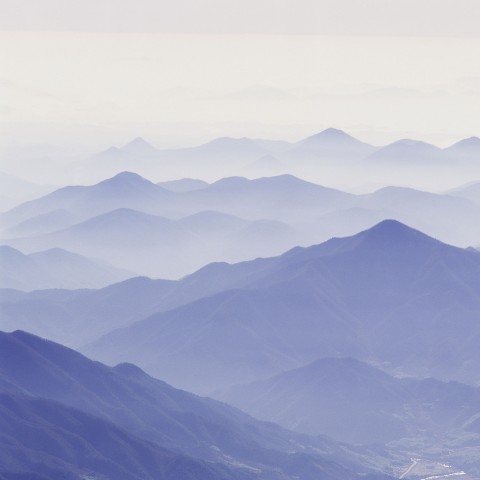
Must-See Places for a 1-3 Day Trip
Depending on how much time you have to visit this exciting city, you may need to prioritize your agenda to include the places and activities that matter most to you. If you’re on a tight schedule, then there are a few must-visit attractions in Seoul we highly recommend!
Day 1 in Seoul
경복궁 – “Gyeongbokgung Palace” (Google map)
경복궁 (gyeongbokgung), or “Gyeongbokgung Palace,” is the largest of the royal palaces built during the Joseon Dynasty and it’s located at the heart of the capital city. This place is famous for travelers walking around the palace dressed up in 한복 (hanbok), or traditional Korean clothing. It’s a great spot for Instagram pictures! You’ll also find guards all around the palace grounds.
Gyeonbokgung regularly holds traditional Korean ceremonies, so do check out their website for more information. Travelers who visit here can also visit the National Palace Museum of Korea and the National Folk Museum of Korea.
인사동 – “Insadong” (Google map)
인사동 (insadong) is a popular location among travelers, who buy many souvenirs for their family and friends here. You can spend many hours just walking through the streets, exploring the authentic Korean hand-made shops and street food stalls.
청계천 – “Cheonggyecheon” (Google map)
After spending a few hours shopping at Insadong, you can walk to 청계천 (Cheonggyecheon) to enjoy the sound of the river and take a nice stroll. It’s a great place to chill and get away from the city’s fast-paced lifestyle. Depending on the time of year, there are different exhibitions and events held here as well.
광화문 광장 – “Gwanghwamun Square” (Google map)
This place is a major tourist attraction in Seoul. The statues of the great naval admiral Yi Sun-sin and 세종 대왕 (sejong daewang), or “King Sejong,” are located here and there are many seasonal events in the square throughout the year. It is also a popular place for demonstrations to take place.
북촌한옥마을 – “Bukchon Hanok Village”(Google map)
Many have reported that once you enter 북촌한옥마을 (bukchonhanokmaul), or “Bukchon Hanok Village,” you feel as though you’ve been transported into the past. Like Gyeongbokgung Palace, this is another great place to dress up in Hanbok. It is one of the most-visited places in Seoul, with plenty of mesmerizing architecture to admire. However, while walking around this area, it’s important to respect the locals as it is a residential area.
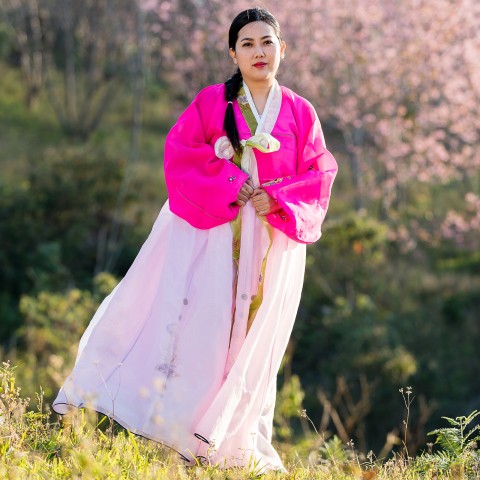
Day 2 in Seoul
광장시장 – “Gwangjang Market” (Google map)
After your first day and night in Seoul, why not kick off your second day at Gwangjang Market? The market is both a shopping street and a street food area, and it’s famous for having a variety of outdoor food courts.
서울타워 – “Seoul Tower” (Google map)
서울타워 (Seoultawo), or “Seoul Tower,” previously known as 남산타워 (namsantawo), is a popular location among local couples because there’s a spot to place love locks. On the other hand, travelers enjoy the tower because it offers a view of the entire city.
명동 – “Myeongdong” (Google map)
명동 (Myeongdong) is a well-known shopping district, featuring many famous Korean cosmetic shops, clothing stores, and some amazing street food. If you’re looking to buy some cosmetics or small gifts for your family or friends, this is the perfect place to do so.
Day 3 in Seoul
인왕산 – “Inwangsan Mountain” (Google map)
인왕산 (Inwangsan), or “Inwang Mountain,” is one of the best places to hike in Seoul, and the entire hike takes about two to three hours. Locals love visiting this place, especially later in the day when they can enjoy the evening light of Seoul. It seems that travelers visit the mountain during the night while locals tend to visit in the evening. If you want to enjoy both, it’s best to start hiking about one or two hours before sunset.
동대문디자인플라자 – “Dongdaemun Design Plaza” (Google map)
The plaza is very easy to visit via subway, and it’s a design-lover’s paradise! The building features a minimalist style of architecture, and if you go inside, you’ll find many shops that sell special items made in Korea. Also, if you visit during Fashion Week, you’ll be able to see many K-pop stars as well as famous Korean fashion models!
강남 – “Gangnam” (Google map)
I’m sure you’ve heard of Gangnam, most likely via the world-famous K-pop star PSY. This is a wonderful place to enjoy shopping and dining, and it’s also a popular meet-up spot for many young locals. You can buy fashionable clothing and cosmetics here, and even visit an underground shopping mall (such as COEX) to find clothes at a cheaper price and enjoy a range of other activities.
봉은사 – “Bongeunsa” (Google map)
Many tourists enjoy visiting temples in Korea. While there are many temples in Seoul, Bongeunsa is one of the most popular among locals and tourists alike. After spending some time in the bustling Gangnam District, why don’t you take a walk around Bongeunsa and enjoy the peace and quiet?
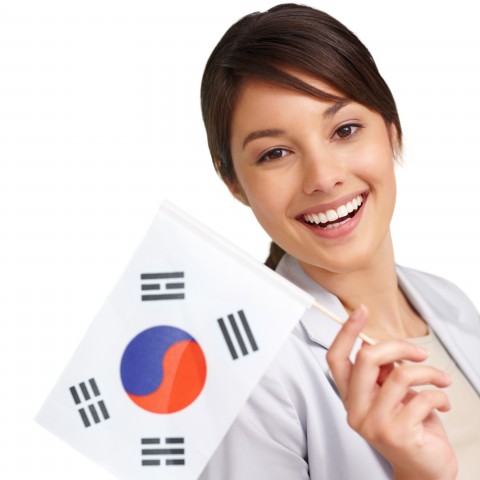
Highly Recommended Places for a 4-7 Day Trip (or Longer)
Do you have a longer trip planned? Great! That will give you time to add a few more memorable locations to your itinerary. Here are a few more must-visit Seoul places that are perfect for more flexible schedules.
한강 – “The Han River” (Google map)
The Han River, or Hangang, is a major hangout area for locals. People can enjoy various activities such as cycling, running, or eating outside with friends. This place is very popular among younger Koreans because you can have food delivered to you while enjoying the outdoors.
이태원 – “Itaewon” (Google map)
If you feel like having a Western dish or have to find places that offer halal food, Itaewon is the place to go. This place is filled with American-style restaurants and bars, as well as plenty of events and parties (including major Halloween parties!). People who live near or often visit this location tend to be very international-minded too, which can make you feel like you’re not even in Korea.
서울 시립 미술관 – “Seoul Museum of Art” (Google map)
Located behind the Decksungung Palace, this museum is known for its large collection of artwork, most of which is from the modern era. Its artwork collection is displayed over three floors, and the museum has its own collection as well as special exhibitions.
롯데월드 타워 – “Lotte World Tower” (Google map)
Lotte World Tower is the tallest observation deck in Korea, soaring in the air at 123 stories (556 meters or 1824 feet) tall. It’s filled with luxury hotels and shopping malls, and there are often firework shows held in the evenings.
진왕사, 북한산 국립공원 – “Jingwansa Temple,” “Bukhansan National Park” (Google map)
What travelers enjoy the most about Seoul is that you can enjoy both city life and nature. Bukhansan National Park is a wonderful hiking destination where traditional buildings are surrounded by hiking trails. There’s also a temple deep in the mountain where you can have an overnight visit and participate in cultural and learning programs.
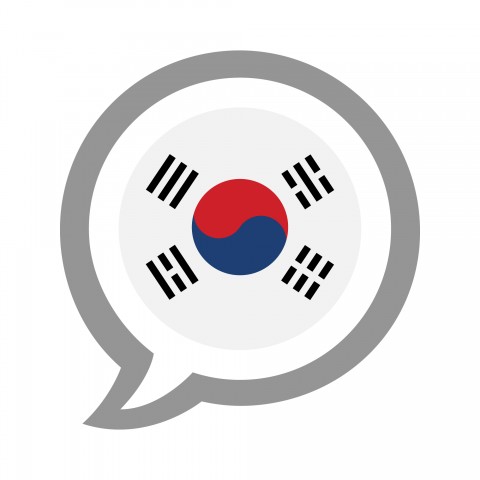
Korean Survival Phrases for Travelers
If you can speak English, you will have no difficulty traveling around Seoul since the majority of young Koreans can speak English, as well as Japanese or Chinese. Many modern restaurants and cafes have menus in English as well. If you want to immerse yourself in the culture and visit Seoul like a local, then you’ll need to learn some basic Korean to get around. Here are the top ten most useful Korean survival phrases for you.
1. “Hello.” – 안녕하세요. (Annyeonghaseyo.)
The Korean language has many different politeness levels, and it’s recommended that you stick to the polite form when speaking with Korean locals. 안녕하세요 (annyeonghaseyo) is a polite way of saying hello to people. You’ll also hear a different greeting from restaurant, hotel, or shop staff: 어서오세요 (eoseooseyo). When you hear this, simply reply with 안녕하세요 (annyeonghaseyo).
Example
[As you enter a cafe]
Staff Member:
어서오세요.
Eoseooseyo.
“Welcome.”
You:
안녕하세요.
Annyeonghaseyo.
“Hello.”
2. “Thank you.” – 감사합니다. (Gamsahamnida.)
This is a polite way to thank someone in Korea. When you say this to a clerk, you’ll likely hear one of two responses:
- 아니예요 (aniyeyo) – “not at all”
- 네 (ne) – “okay”
Example
[As you receive a take-out coffee from an employee]
You:
감사합니다.
Gamsahamnida.
“Thank you.”
Staff Member:
네
Ne.
“Okay.”
3. “Goodbye.” – 안녕히 계세요. (Annyeonghi gyeseyo.) / 안녕히 가세요. (Annyeonghi gaseyo.)
There are two ways to say “goodbye” in Korean: 안녕히 계세요 (annyeonghi gyeseyo) and 안녕히가세요 (annyeonghi gaseyo).
안녕히 가세요 (annyeonghi gaseyo) is used when you say “goodbye” to someone who is leaving. On the other hand, 안녕히 계세요 (annyeonghi gyeseyo) is used when you are the one leaving and the other person is staying.
Example
[As you leave a cafe]
Staff Member:
안녕히가세요.
Annyeonghi gaseyo.
“Goodbye.”
You:
안녕히 계세요.
Annyeonghi gyeseyo.
“Goodbye.”
4. “Sorry.” – 죄송합니다. (Joesonghamnida.)
죄송합니다 (joesonghamnida) is the most commonly used phrase for saying sorry to someone, though you can also say 미안합니다 (mianhamnida); the two phrases have the same meaning and can be used interchangeably. However, if you want to say “sorry” or “excuse me” so you can get through a crowd, you should say one of these two phrases instead:
- 실례합니다 (sillyehamnida) – “excuse me”
- 지나가겠습니다 (jinagagessseumnida) – “passing through”
Example
[When you step on someone’s foot by mistake]
You:
죄송합니다.
Joesonghamnida
“Sorry.”
5. “Sure.” / “Okay.” – 좋아요. (Joayo.)
좋아요 (joayo) means “like something,” but is also used to say “sure” or “okay” in Korean. If someone asks a question and you want to say “sure,” simply say 좋아요 (joayo).
Example
Friend:
오늘 5시에 볼까요?
Oneul daseosie bolkkayo?
“Shall we meet at 5?”
You:
좋아요.
Joayo.
“Sure.”
6. “I don’t/can’t speak Korean.” – 한국말 못해요. (Hangugmal mothaeyo.)
You will have no problem ordering food at a cafe or restaurant since most of the staff (university students) can speak decent English. However, many older restaurants run by locals don’t have an English menu or English-speaking staff. To say that you don’t understand or speak Korean, simply say: 한국말 못해요. (Hangugmal motaeyo.)
Example
[When an old person comes to you and speaks to you in Korean]
You:
죄송합니다. 한국말 못해요.
Joesonghamnida. Hangugmal motaeyo.
“Sorry, I don’t speak Korean.”
7. “Where is the restroom?” – 화장실은 어디에 있어요? (Hwajangsireun eodie isseoyo?)
Let’s break it down:
- 화장실 (hwajangsil) – “toilet”
- 어디에 (eodie) – “where”
- 있어요 (isseoyo) – “is at”
Most restrooms are located near the stairway and the door is always locked for safety reasons. Therefore, it’s always good to ask a staff member directly and get a key (or a key number) so that you can enter.
Example
You:
화장실은 어디에 있어요?
Hwajangsireun eodie isseoyo?
“Where is the bathroom?”
Staff Member:
밖에 있어요. 키 가지고 가세요.
Bakke isseoyo. Ki gajigo gaseyo.
“It’s outside. You need to take a key with you.”
8. “How much is it?” – 이거/저거 얼마예요. (Igeo/Jeogeo eolmayeyo.)
We’ll break this one down, too:
- 이거 (igeo) – “this”
- 저거 (jeogeo) – “that”
- 얼마에요 (eolmayeyo) – “how much”
When you’re at an underground shopping mall, it’s a good idea to carry cash with you since the staff will offer additional discounts for people who purchase items with cash.
Example
You (pointing at a bag):
이거 얼마예요?
Igeo eolmayeyo?
“How much is this?”
Staff Member:
5만원이요.
Omanwoniyo.
“50,000 won.”
9. “I want this.” – 이거 주세요. (Igeo juseyo.)
This phrase is commonly used when shopping or ordering food. When you want to order something from a menu and don’t know how to pronounce it, simply point your finger at its picture and say this phrase.
Example
[You are at an underground shopping mall]
Staff Member:
주문하시겠어요?
Jumunhasigesseoyo?
“What would you like to order?”
You:
이거 주세요.
Igeo juseyo.
“I want this, please.”
10. “Help!” – 도와주세요! (Dowajuseyo!)
도와주세요 (dowajuseyo) is a polite way to ask for someone’s help in Korean. On the other hand, 살려주세요! (Sallyeojuseyo!) is a stronger phrase used to call for help. It means “Please save (my life),” so if you say this, people will instantly understand that immediate action (such as calling 112) is required.
Example
누구 없어요? 도와 주세요.
Nugu eopsseoyo? Dowa juseyo.
“Somebody, help!”
There are many emergency assistance services available in Korea for foreigners. Remember to keep these emergency numbers with you at all times in case of an emergency.
- Police: 112
- Fire and ambulance: 119
- Medical emergencies: 129
- Foreigner community service: 02-798-7529
- Seoul help office: 02-3140-1903
- International SOS Korea LTD: 02-3150-1700
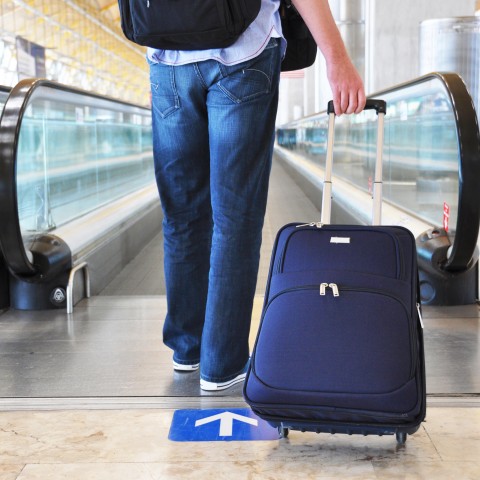
Want to Learn More Survival Phrases? No Problem!
Here are more useful pages where you can learn additional Korean phrases before traveling to Korea!
- Survival Phrases: Don’t waste any time! Get the most language knowledge in the shortest amount of time with these survival phrases from KoreanClass101.
- Top 30 Travel Phrases You Should Know
- Travel
- Don’t Travel Without Knowing These Top 10 Verbs
- The Top 10 Ways to Prepare for Travel in Korean
- The Amazing Race Comes to Korea: How Will You Travel?
- Travel & Language Go Together, So We’ve Partnered With British Airways
- Choosing Travel Insurance in South Korea
You can also create an account on KoreanClass101 to learn even more essential Korean phrases and how to use them.
Before you go, we’re curious: Have you ever visited Korea, or will this be your first time? If you’ve been before, share your experience with us in the comments below!








